Plant Fertilizer 101: How to Feed Your Garden
Updated: Dec. 07, 2022
Strong and healthy plants thrive when you feed them properly. Here’s how to give your garden a nutrient boost with plant fertilizer.
Our editors and experts handpick every product we feature. We may earn a commission from your purchases.
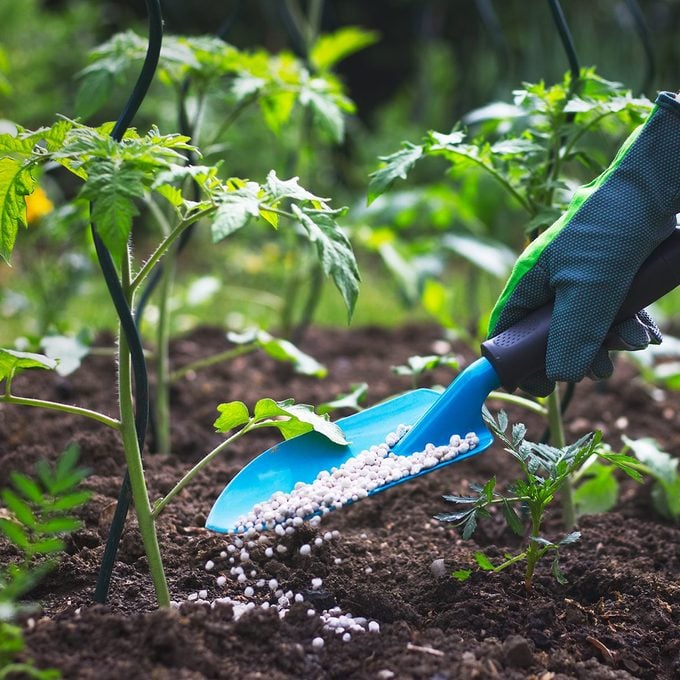
Shopping for plant fertilizer and applying it may seem perplexing at first. Follow these simple tips and you’ll be fertilizing like a pro in no time.
On This Page
Read the Label
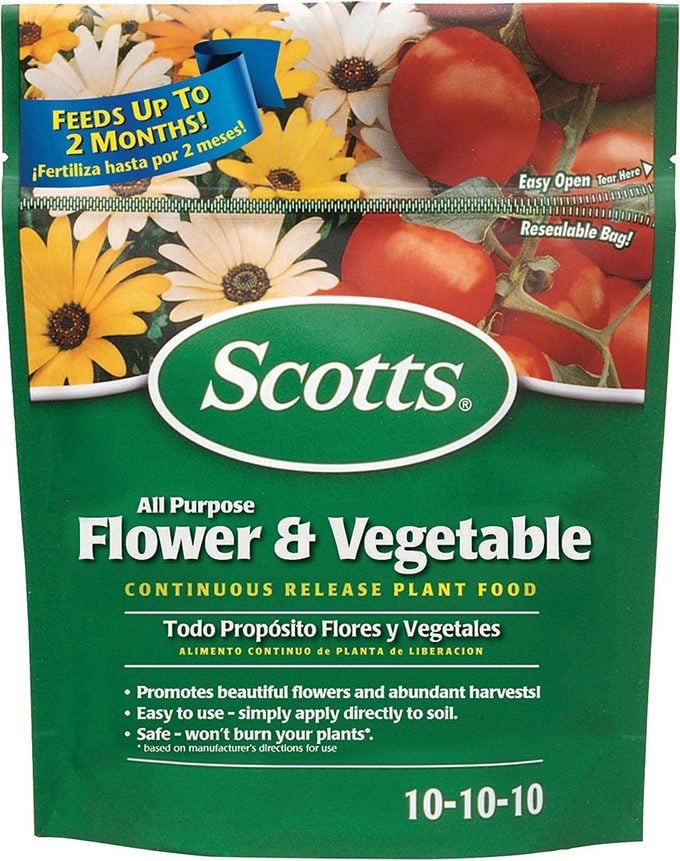
The front of every bag contains three numbers, such as 10-10-10 or 10-15-10 or 6-3-0. In order, these represent the percentage of nitrogen, phosphorus in the form of phosphate, and potassium in the form of potash. The rest of the material is filler that dilutes the fertilizer so it’s easier to apply. A balanced fertilizer (formulation 10-10-10 or 12-12-12) may seem suitable for most gardens, but this can lead to excessive levels of phosphorus and potassium, so it’s important to conduct a soil test before choosing a fertilizer.
Many are also labeled as fast- or slow-release, indicating how quickly the nutrients are available to the plant. Fast-release types dissolve in water and are readily available. They are fast-acting and less expensive but pose a greater risk of fertilizer burn and groundwater pollution if misapplied.
Slow-release types deliver small amounts of nutrients for plants to use over time. They have a lower burn potential and require fewer applications, but usually cost more.
Avoid these common mistakes you’re making with your tomato garden.
How to Apply Plant Fertilizer
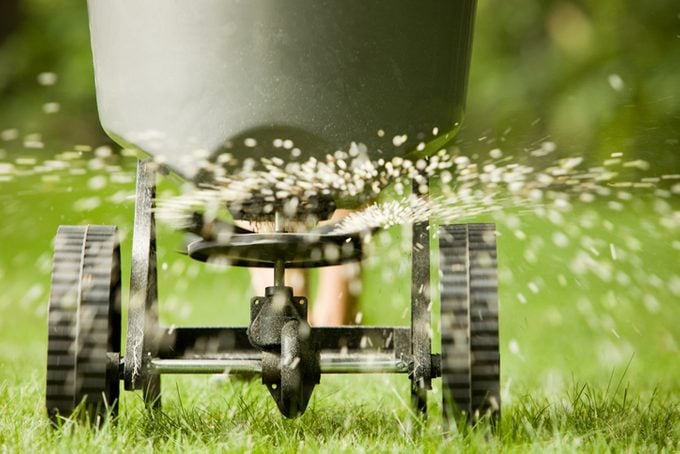
Drop and broadcast spreaders apply granular fertilizer to large spaces, such as established grassy areas or unplanted large lawns, beds and gardens. In existing gardens, apply when the plants are dry. Brush off any granules that land on leaves. Lightly cultivate and then water, so the fertilizer soaks into the soil.
Use hand-held spreaders for applying granular fertilizer to small or medium-sized gardens. With this technique, fertilize only the plants that need it. Sprinkle on the ground around the base of plants and lightly scratch into the soil with a rake or trowel. Unless steady rain is predicted, water right away.
Psst—discover 19 secrets your landscaper won’t tell you.
How Often to Fertilize Plants
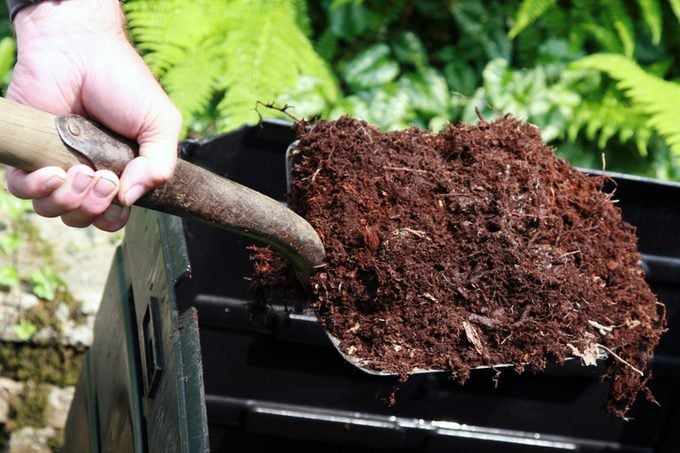
Annuals
Annual plants should be given a low-nitrogen formula. Use 2 to 3 pounds per 100 square feet every season. Use a slow-release fertilizer once, or make three 1-pound applications throughout the growing season. In areas with a long season, a midseason application may be needed.
Ground Covers
Most ground covers need only one spring application of nitrogen-rich fertilizer, but those with flowers and fall color typically don’t.
Perennials
Perennial plants perform best when fertilized in spring with compost or aged manure. Apply 2 inches every two to three years, using additional fertilizer as needed.
Container Plants
For potted plants, add a slow-release type to the soil mix before planting. Every time you water, a little fertilizer is released, providing a steady flow of nutrients. But depending on the growing conditions and number of plants in the container, a midseason boost may be needed. Can you reuse potting soil in planters?
Trees and Shrubs
Avoid over fertilizing trees and shrubs, which often get nutrients from nearby fertilized plantings and lawns.
Learn the 7 things you need to know before planting a tree.
Indoor Plants
Gardening expert Melinda Myers says: Only fertilize houseplants when they’re actively growing, which is in spring and summer for most plants. Limit fertilization from September or October through March, based on your plant’s needs. A monthly application of diluted liquid fertilizer or one application of a slow-release fertilizer in spring is sufficient for most houseplants.
Here’s why your houseplant has brown tips on its leaves.
Lawns
Northern gardeners should apply a low-nitrogen, slow release fertilizer to the lawn before the ground freezes. Southerners growing warm season grasses should apply it four weeks before the first fall frost. Grass puts down roots until the ground freezes, so fertilizing now encourages root growth and reduces the risk of disease.
Get 7 tips for growing a healthy lawn.
Signs of Nutrient Deficiencies
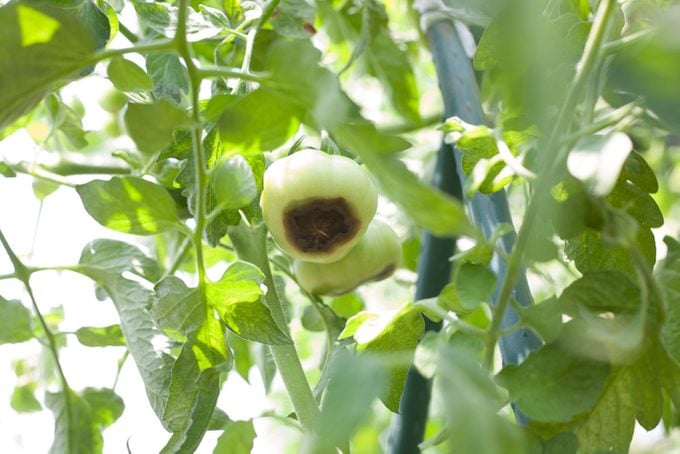
- Nitrogen: Pale green or yellowish lower leaves; slow growth.
- Potassium: Yellow or brown along older leaf edges. May have yellowing between veins, curling or spotting.
- Calcium: Deformed or failed terminal buds and root tips. Results in blossom end rot in peppers and tomatoes.
- Phosphorus: A burned look on leaf tips; dark green or reddish purple older leaves.
- Sulfur: Light green over the entire plant; yellowing of younger leaves.
- Iron: Yellowing between veins of upper leaves leading to an eventual bleached look. Possibility of new leaves being yellowish white.
- Manganese: Paling or yellowing of leaf tissue between veins, followed by spots that occur on middle leaves first
Keep a Record
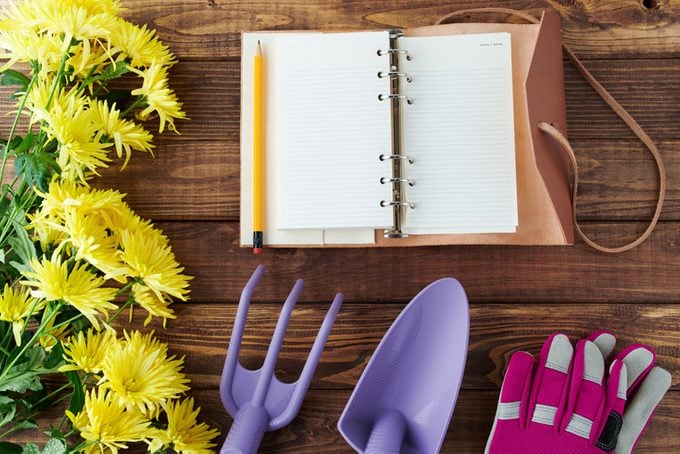
Stay on top of your plant fertilizer applications by making notes on a calendar.
Next, find out if you should use coffee grounds in the garden.




















